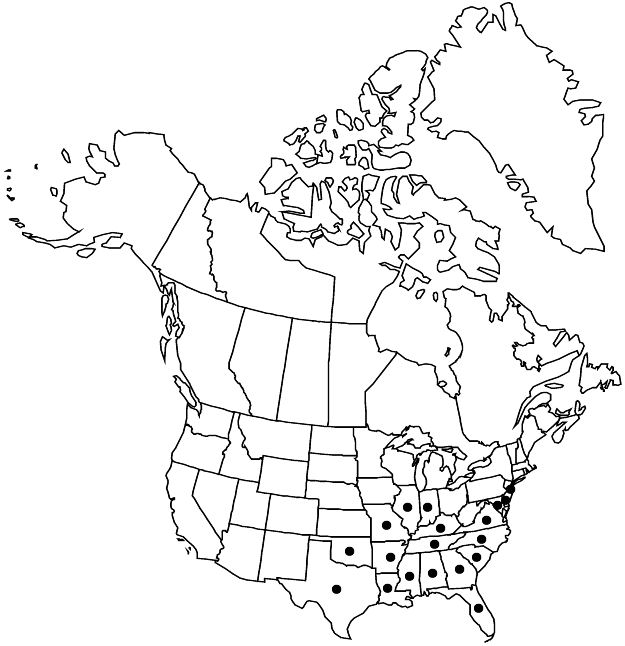Cornus foemina
Gard. Dict. ed. 8, Cornus no. 4. 1768.
Shrubs, to 8 m, flowering at 1.5 m; rhizomes absent. Stems clustered; bark gray-brown, becoming gray-black, corky, appearing braided, splitting longitudinally, checkered; branchlets deep red, often pale green abaxially, or completely green or bronze if shaded, 2 proximal internodes densely pubescent, distal internodes sparsely appressed-hairy; lenticels pale circular spots on new growth, usually more common on distal portion of internodes, often overlapping, localized to form longitudinal bands, splitting periderm but not protruding or extruding tissue on 2d year branches, periderm swelling around them and usually over large contiguous areas; pith white in 1st year branches, tan in older branches. Leaves: petiole 5–16 mm; blade lanceolate, elliptic, or oblanceolate, 3.5–11 × 1–6 cm, base cuneate to rounded, apex abruptly acuminate to an obtuse tip, abaxial surface pale green, adaxial surface dark green, midvein turning red or maroon, both surfaces with hairs appressed, sparse, glabrate by late summer; secondary-veins 3–4 per side, evenly spaced, basal vein arising 1–2 mm from blade base. Inflorescences flat-topped, convex, or pyramidal, 2–8 cm diam., peduncle 15–45 mm; branches and pedicels greenish yellow, turning red in fruit. Flowers: hypanthium densely appressed-hairy; sepals 0.4–1 mm; petals cream, 2.6–3.8 mm. Drupes pale blue, violet plumbeous, or blue-violet, often turning whitish blue to white, globose or oblate-ellipsoid, 5–6 × 6–10 mm; stone globose to oblong, 3–3.7 × 3.7–5 mm, slightly ribbed, apex rounded.
Phenology: Flowering Mar–Jun; fruiting Aug–Oct.
Habitat: Marshes, swamps, river and stream banks, pocosin margins, interdune swales, wet ditches.
Elevation: 0–1500 m.
Distribution

Ala., Ark., Del., Fla., Ga., Ill., Ind., Ky., La., Md., Miss., Mo., N.J., N.C., Okla., S.C., Tenn., Tex., Va.
Discussion
Cornus foemina has a coronulate or minutely papillate abaxial leaf surface, visible under high magnification, like that of C. obliqua and C. racemosa.
Cornus cyanocarpus J. F. Gmelin 1791, a parahomonym (thus illegitimate) of C. cyanocarpa Moench 1785, pertains here.
Selected References
None.